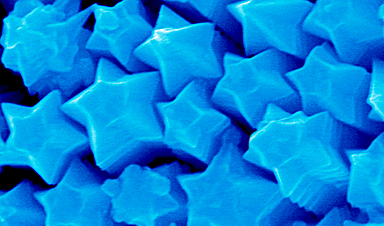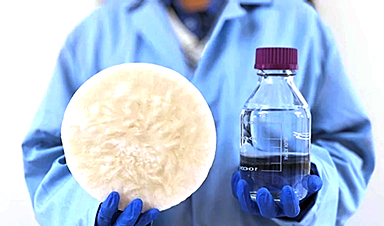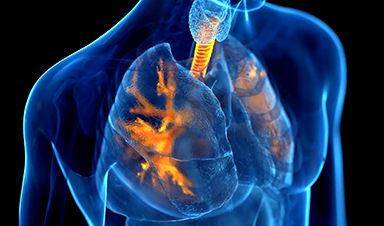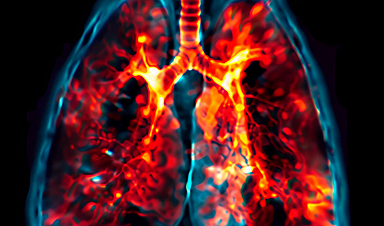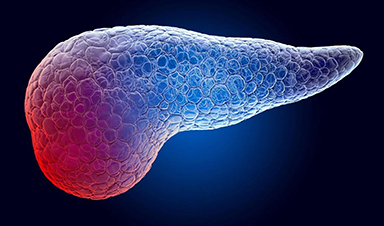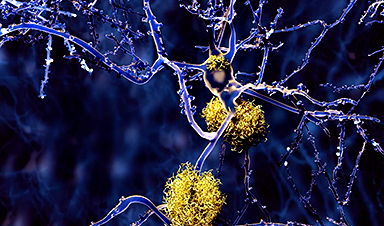Together with colleagues, a group of scientists from Immanuel Kant Baltic Federal University synthesized nanostructures of gold and iron oxides that have improved magnetic and optical properties because of their unique star shape. The particles obtained are safe for healthy human cells and can be used in tumor therapy. The results of the study are published in the journal ACS Applied Materials & Interfaces.
The optical properties help to visualize, that is, to track particles in the human body. It can be used for photothermal therapy, during which the cells are heated and destroyed by the light of a certain wavelength. These features can be used together to provide more effective destruction of cancer cells.
Together with international colleagues, scientists from the Scientific and Educational Center “Smart Materials and Biomedical Applications” (based on Immanuel Kant Baltic Federal University, Kaliningrad), synthesized nanostructures containing gold and iron oxides, which can be used in photothermal and magneto-mechanical cancer therapy.
Researchers studied the structure of the resulting particles. The latter were star-shaped and had a core of gold, surrounded by an iron oxide sheath. The scientists proved that the shape and optical response of the particles were excellent for combined cancer therapy.
Moreover, the scientists tested how the particles affect breast cancer cells and cell culture, blood vessel walls are normally formed. The cells were pre-incubated in a culture medium with predetermined concentrations of nanoparticles.
It turned out that the nanoparticles had good biocompatibility—they had low toxicity and did not affect the viability of healthy cells. At the same time, the viability of cancer cells with nanostructures was reduced by 65% after the influence of a variable magnetic field of low frequency. When exposed to light, the viability of cancer cells was reduced by 45% due to the local heating of the nanoparticles. The effectiveness of the approach was also confirmed by morphological changes in cancer cells, including their “shrinkage” after alternating magnetic field or light therapy.
“The purpose of this study was to develop and test multifunctional nanoparticles with special magnetic and optical properties. In biomedicine, such nanoparticles are a promising material for cancer treatment. That’s why in this article we showed not only the detailed characterization of the physicochemical properties of the obtained samples. We also added the results of cytotoxicity upon application of various external stimuli (optical radiation and magnetic field), and showed the effectiveness of both approaches,” says Alexander Omelyanchik, a researcher at the Scientific and Educational Center “Smart Materials and Biomedical Applications” (based on Immanuel Kant Baltic Federal University, Kaliningrad).
News
Tumor “Stickiness” – Scientists Develop Potential New Way To Predict Cancer’s Spread
UC San Diego researchers have developed a device that predicts breast cancer aggressiveness by measuring tumor cell adhesion. Weakly adherent cells indicate a higher risk of metastasis, especially in early-stage DCIS. This innovation could [...]
Scientists Just Watched Atoms Move for the First Time Using AI
Scientists have developed a groundbreaking AI-driven technique that reveals the hidden movements of nanoparticles, essential in materials science, pharmaceuticals, and electronics. By integrating artificial intelligence with electron microscopy, researchers can now visualize atomic-level changes that were [...]
Scientists Sound Alarm: “Safe” Antibiotic Has Led to an Almost Untreatable Superbug
A recent study reveals that an antibiotic used for liver disease patients may increase their risk of contracting a dangerous superbug. An international team of researchers has discovered that rifaximin, a commonly prescribed antibiotic [...]
Scientists Discover Natural Compound That Stops Cancer Progression
A discovery led by OHSU was made possible by years of study conducted by University of Portland undergraduates. Scientists have discovered a natural compound that can halt a key process involved in the progression [...]
Scientists Just Discovered an RNA That Repairs DNA Damage – And It’s a Game-Changer
Our DNA is constantly under threat — from cell division errors to external factors like sunlight and smoking. Fortunately, cells have intricate repair mechanisms to counteract this damage. Scientists have uncovered a surprising role played by [...]
What Scientists Just Discovered About COVID-19’s Hidden Death Toll
COVID-19 didn’t just claim lives directly—it reshaped mortality patterns worldwide. A major international study found that life expectancy plummeted across most of the 24 analyzed countries, with additional deaths from cardiovascular disease, substance abuse, and mental [...]
Self-Propelled Nanoparticles Improve Immunotherapy for Non-Invasive Bladder Cancer
A study led by Pohang University of Science and Technology (POSTECH) and the Institute for Bioengineering of Catalonia (IBEC) in South Korea details the creation of urea-powered nanomotors that enhance immunotherapy for bladder cancer. The nanomotors [...]
Scientists Develop New System That Produces Drinking Water From Thin Air
UT Austin researchers have developed a biodegradable, biomass-based hydrogel that efficiently extracts drinkable water from the air, offering a scalable, sustainable solution for water access in off-grid communities, emergency relief, and agriculture. Discarded food [...]
AI Unveils Hidden Nanoparticles – A Breakthrough in Early Disease Detection
Deep Nanometry (DNM) is an innovative technique combining high-speed optical detection with AI-driven noise reduction, allowing researchers to find rare nanoparticles like extracellular vesicles (EVs). Since EVs play a role in disease detection, DNM [...]
Inhalable nanoparticles could help treat chronic lung disease
Nanoparticles designed to release antibiotics deep inside the lungs reduced inflammation and improved lung function in mice with symptoms of chronic obstructive pulmonary disease By Grace Wade Delivering medication to the lungs with inhalable nanoparticles [...]
New MRI Study Uncovers Hidden Lung Abnormalities in Children With Long COVID
Long COVID is more than just lingering symptoms—it may have a hidden biological basis that standard medical tests fail to detect. A groundbreaking study using advanced MRI technology has uncovered significant lung abnormalities in [...]
AI Struggles with Abstract Thought: Study Reveals GPT-4’s Limits
While GPT-4 performs well in structured reasoning tasks, a new study shows that its ability to adapt to variations is weak—suggesting AI still lacks true abstract understanding and flexibility in decision-making. Artificial Intelligence (AI), [...]
Turning Off Nerve Signals: Scientists Develop Promising New Pancreatic Cancer Treatment
Pancreatic cancer reprograms nerve cells to fuel its growth, but blocking these connections can shrink tumors and boost treatment effectiveness. Pancreatic cancer is closely linked to the nervous system, according to researchers from the [...]
New human antibody shows promise for Ebola virus treatment
New research led by scientists at La Jolla Institute for Immunology (LJI) reveals the workings of a human antibody called mAb 3A6, which may prove to be an important component for Ebola virus therapeutics. [...]
Early Alzheimer’s Detection Test – Years Before Symptoms Appear
A new biomarker test can detect early-stage tau protein clumping up to a decade before it appears on brain scans, improving early Alzheimer’s diagnosis. Unlike amyloid-beta, tau neurofibrillary tangles are directly linked to cognitive decline. Years [...]
New mpox variant can spread rapidly across borders
International researchers, including from DTU National Food Institute, warn that the ongoing mpox outbreak in the Democratic Republic of the Congo (DRC) has the potential to spread across borders more rapidly. The mpox virus [...]
